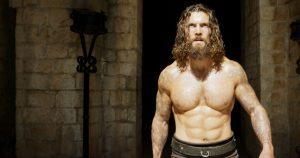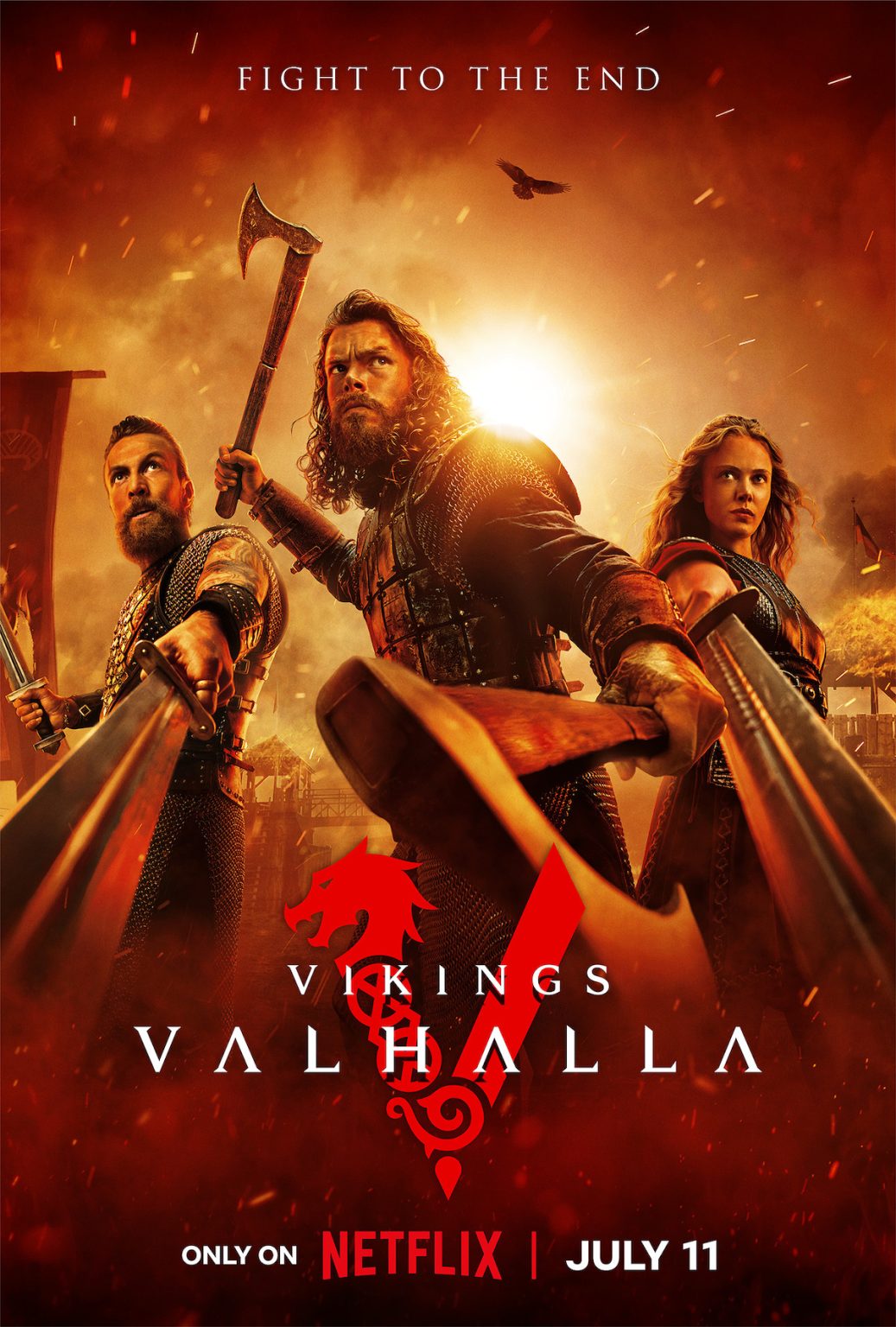
Vikings: Valhalla’s third and last season is now available. This is an amazing final season that is action-packed, character-driven, and emotionally charged. It both sets up the plot for upcoming spinoffs and concludes the primary story of the central trio, Harald Sigurdsson, Leif Eriksson, and Freydis Eriksdotter. How does it all come to an end? Let us explain how this ends. Warning: this contains spoilers!
Season 1 of the spinoff Vikings: Valhalla picks up the story 100 years after the events of Vikings, starring Leif Eriksson (Sam Corlett), his sister Freydis Eriksdotter (Frida Gustavsson), and Harald Sigurdsson (Leo Suter). They all carve out their own routes in life in season 1. After leaving Greenland, Leif and Freydis journey to Norway, where they design their own fates. Prince Harald also aspires to be the upcoming Norwegian king. The first season tells the story of Freydis’ journey to Uppsala, the center of Norse paganism, as well as the raid on England and the battle of London Bridge.
By season two, Harald and Leif have traveled to Constantinople; while Leif is interested in learning more about the globe, Harald wants to assemble an army to retake Norway. In the meantime, Freydis visits Jomsborg, a fabled Viking stronghold, in an attempt to rebuild Uppsala following its destruction.
Season three, the last season, is now upon us. Seven years have passed since the end of season two when the new season begins. Leading characters now, Harald and Leif battle in the wars waged by the Byzantine Emperor, mostly in Sicily. In the Byzantine city, Leif persists in his quest for understanding. He declares his intention to travel westward, to the fabled “Golden Lands,” in order to ensure his place in history as one of the greatest Viking explorers. Nonetheless, Harald has with far greater goals in mind. Check out the teaser below:
Harald and Leif are regarded as recognized Byzantine army leaders at the start of the season. They engage in combat in Sicily and prevail. However, it turns out that their own camp is home to the enemies. Look no farther than the Byzantine general Maniakes (Florian Munteanu).
 Maniakes turns against Harald and swiftly becomes his enemy, sewing him up. Admired by the Emir and well rewarded for his labors, Harald becomes entangled in his own love for Eleana, the wife of Emperor Romanos. Harald is set free by these emotions and the way he responds to them. Additionally, he is eventually placed on trial after being falsely accused of the Emperor Romans’ murder. In order to defend his buddies, Harald enters a guilty plea rather than refuting the accusations.
Maniakes turns against Harald and swiftly becomes his enemy, sewing him up. Admired by the Emir and well rewarded for his labors, Harald becomes entangled in his own love for Eleana, the wife of Emperor Romanos. Harald is set free by these emotions and the way he responds to them. Additionally, he is eventually placed on trial after being falsely accused of the Emperor Romans’ murder. In order to defend his buddies, Harald enters a guilty plea rather than refuting the accusations.
But this is Harald Sigurdsson, after all, and he does not take death lightly. After breaking out of jail, he meets Maniakes, which leads to a fight to the death. After defeating Maniakes, Harald goes back to Norway with the intention of fulfilling his destiny and ascending to the throne.
However, upon returning to Norway, Harald finds several others bent on seizing the throne for themselves. Firstly, with Canute deathly ill, and learning of the death of his father Forkbeard, he gathers his sons to decide who would succeed him. He names his youngest son Harthcanute the soon-to-be next King of Denmark, with Harefoot as his regent. Then he says Prince Edward and Alfred will return to Normandy. He also decrees that his wife Queen Emma would inherit the English crown, much to the distain of his sons. And then there’s Magnus, the son of Olaf, who self-proclaims himself King of Norway, following in his father’s footsteps.
Magnus and Harald travel to Kattegat after Canute dies, where they make a vow to succeed him as king. Magnus even ends the seven-year reign of Queen Ælfgifu in Kattegat. Here’s when the plot twist occurs: it is decided that Magnus and Harald jointly govern. Of course, this is short-lived. Magnus, a devout Christian, finds it offensive that Harald harbors pagan feelings, especially for Freydis. As a result, he gives the order for her execution, which Harald startlingly complies with.
When Harald and Leif rebel on the day of Freydis’ execution, they set Kattegat on fire. Harald then assumes the name Harald Hardrada, ensuring his coronation as King of Norway.
Conversely, though, Leif sets Using a ship and crew that Canute himself gave him, he sets off to attempt and locate the fabled “Golden Land” to the west.
The series’ other plot line carries on Freydis’ spiritual quest. With the intention of turning Jormsborg into the next Uppsala—a spiritual haven for people who continue to believe in the Norse Gods—she moves there in season 2. However, after an Ergot disease sweeps the region and Olaf’s son Magnus returns to retrieve his father’s corpse, Jormsborg is abandoned and Freydis goes back to Greenland.

We meet Leif and Freydis’ father, Erik the Red (Goran Višnjić), when we are in Greenland. The leader of his Greenland settlement is Erik. Surprisingly, Erik was first presented in the first Vikings television series; yet, Valhalla has brought him back. Erik, a staunch supporter of the traditional methods, and Freydis are at odds, which causes tension to arise between them.
Soon after, Harald, the son of Freydis and Harold Sigurdsson, is taken by Erik, who then loses his mind and begins a murderous rampage, killing everyone in Jormsborg. This plot serves to clarify the histories of Harold and Freydis and is undoubtedly darker and more ominous. In the end, Freydis makes her way back to Kattegat, where she meets up with Harald and Leif again. Harold is meeting Freydis for the first time since first season. Harald is mentioned even though we don’t see him interact with his son. Even though this is the last season, it feels like we’re just getting warmed up. Is another spinoff in order?
Vikings: With the destruction of Valhalla, will the Vikings also perish?
Yes, the Vikings: Valhalla series is over, but it doesn’t seem that way. Future story arcs are already planned, and there are still a ton of moving parts. For example, William the Conqueror is introduced to us, albeit in his teenage years. Furthermore, history has shown us that Harold Godwinson, Godwin’s son, had a significant historical impact.
The parts are all put together in Valhalla’s final season to cover the Battle of Hastings in 1066. It’s ideal groundwork for a spinoff. We’ll have to wait and see if it materializes. However, the goal is evidently present.
Netflix is currently streaming season three of Vikings: Valhalla.

